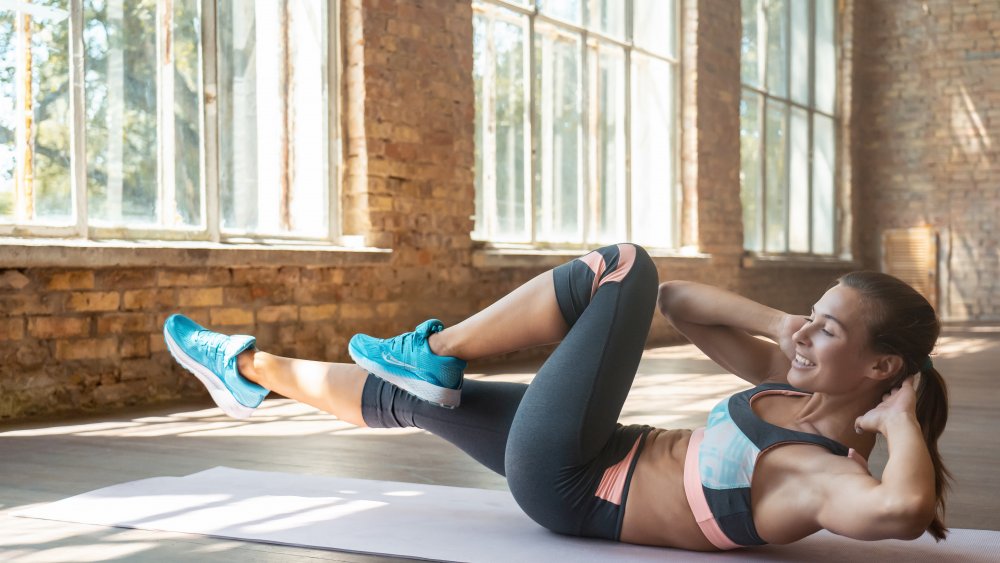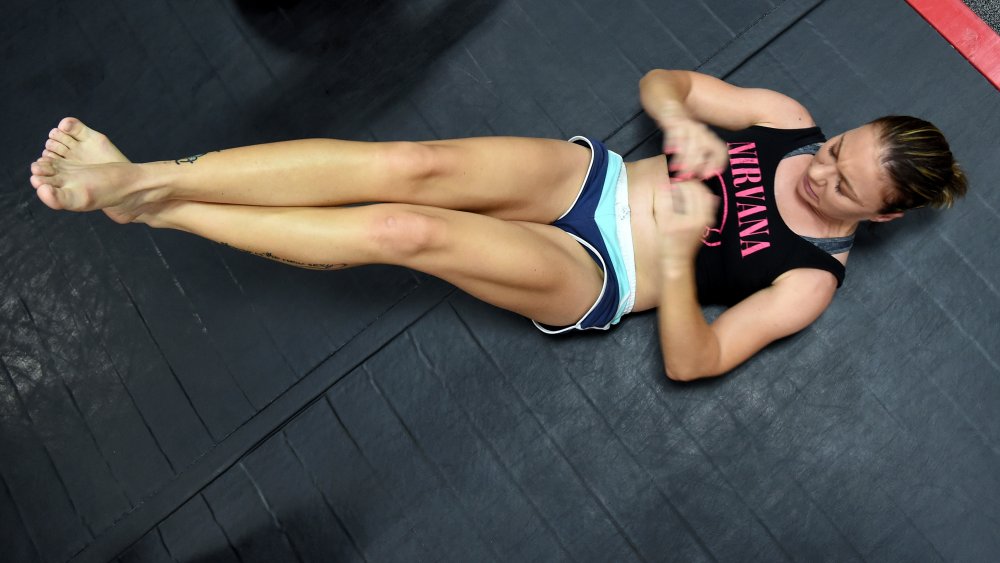This Is Why Doing Crunches Makes Your Neck Hurt
You probably do crunches to work on your abs, right? According to Harvard Health Publishing, your abdominal muscles include your rectus abdominis in the front, the obliques in the front and side, and the transverse abdominis across your lower abs. These are the muscles you want to work when doing crunches — but if you feel it more in your neck, there is a problem.
If you're doing crunches and you stop because, instead of your abs getting tired, your neck gets tired, you need to rethink how you do your crunches. Straining your neck is not the proper way to do crunches, and it means you're making your neck do most of the work instead of your abs, which makes the crunches you're doing ineffective (via NHS). Basically, you're not going to feel any strain in your neck if you're doing crunches properly.
So, how do you do crunches with proper form?
How to do crunches properly
Tucking your chin toward your chest reduces the strain on your neck and helps you focus the exercise on your abs, according to a 2016 study published in the Journal of Physical Therapy Science.
How? Tucking your chin activates your hyoid muscles that run from your chin to your collarbone, helping to stabilize the area so you can slowly lift your head and shoulders during a crunch. But don't tuck so much that your chin is touching your chest. Imagine a tennis ball or a piece of fruit between your chin and chest.
Also, avoid putting your hands behind your head during crunches. You can put your hands on your forehead or lightly touch your face. A 2013 study published in Physical Therapy Korea found that when participants tucked their chins and lightly touched their faces during crunches, it relaxed the muscle that runs from the ears to the collarbone (the sternocleidomastoid), helping reduce neck pain.
Make sure you're engaging your abs by tucking your belly button into the floor. Bring your head and shoulders off the floor a few inches, keeping those abs engaged, and lower yourself back to the floor. Keep it slow and controlled. Now you're doing a proper crunch!


